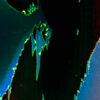

Sign in to Granta.com.


Sign in to Granta.com.

‘We meet at various points in the great swathes of the past that neither of us were alive to witness.’
Allen Bratton on a daytrip to a castle with his older boyfriend.

‘Listening to three white poets, whom I suspect are academics, talk about the state of poetry.’
Oluwaseun Olayiwola eavesdrops on an older generation.

‘I’d been dubious about his company at first.’
Sarah Moss on watching Shakespeare with her twelve-year-old son.

‘She didn’t trust us because, to her, tenants were like children.’
Kate Zambreno on negotiating with her older landlady.

‘A moment now swallowed in embarrassment, I asked a question only a young person might ask an older one.’
Lynne Tillman on trying to understand what makes a generation.
Y-Dang Troeung was a researcher, writer and assistant professor of English at the University of British Columbia. She was the author of Refugee Lifeworlds: The Afterlife of the Cold War in Cambodia, and she co-directed the short film Easter Epic and organised the exhibition Remembering Cambodian Border Camps, 40 Years Later at Phnom Penh’s Bophana Center. She died of pancreatic cancer at the age of forty-two. ‘Mute Tree’ is an excerpt from her memoir Landbridge, forthcoming from Allen Lane in the UK and Knopf in Canada.
More about the author →
‘the woods are vocal / with no single refrain’
Poetry by Jonathan Skinner.
‘I came to the magazine in 2005 and took over the editorship in 2013.’
Sigrid Rausing introduces her last issue.
‘I repeat: the landscape of war is an acoustic landscape.’
Peter Englund on the war in Ukraine, translated from the Swedish by Sigrid Rausing.
‘It’s a paper bag filled with pastries. Chicken turnovers.’
An extract from Family Meal by Bryan Washington.
‘I see this everywhere. The creativity, resourcefulness and incredible talent for improvisation in Egypt.’
Wiam El-Tamami on returning to Cairo.
‘There was always cynicism about Ray being a deaf novelty act.’
Raymond Antrobus on performance, Deafness and Johnnie Ray.

Granta magazine is run by the Granta Trust (charity number 1184638)
The copyright to all contents of this site is held either by Granta or by the individual authors, and none of the material may be used elsewhere without written permission. For reprint enquiries, contact us.
